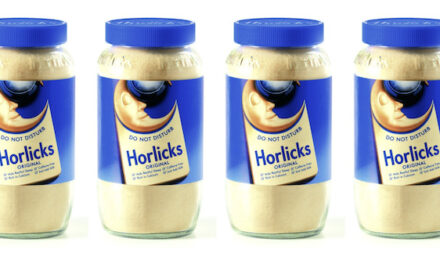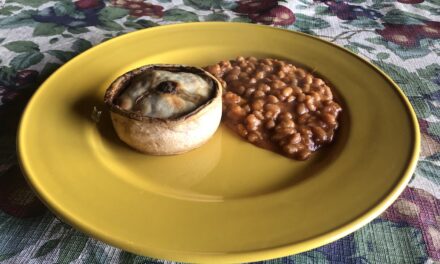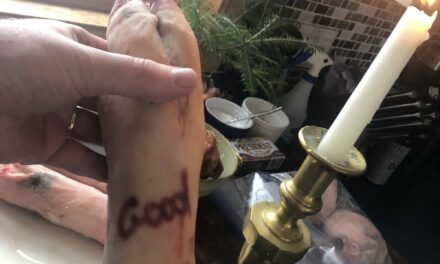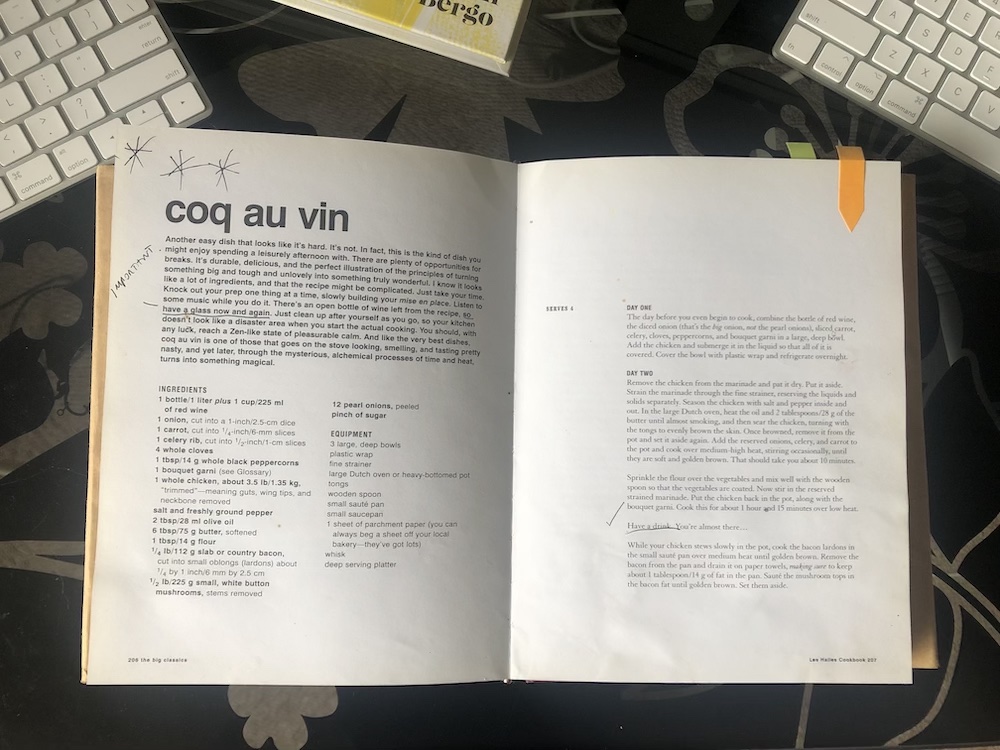
The recipe that inspired my “Lapin Au Vin” journey… Les Halles Cookbook (2004). The only Bourdain book in the house.
This was originally going to be published last weekend, but I was reminded that some of our readers with more delicate dispositions may have closer relations with the Easter Bunny than I have ever had.
I was certainly never as in love with the late Anthony Bourdain as so many of my peers, purposely avoiding anything even slightly associated with him for best part of two decades.
There is one thing, however, that I do have to thank him for though, and that is teaching me how to make the perfect Coq Au Vin through his recipe in his Les Halles Cookbook (2004).
Now whilst one can find almost identical recipes in any recipe book of French Bistro staples, it was his three pages of slightly rakish instruction that inspired me to make this rather time consuming dish a regular part of my culinary repertoire. Without wanting to give him too much credit, I twisted the recipe to suit my own ends, namely switching the everyday chicken for bunny (or hare), and over the years shifting a handful of the flavours hither and thither, in line with my particular gastronomic perversions that week.
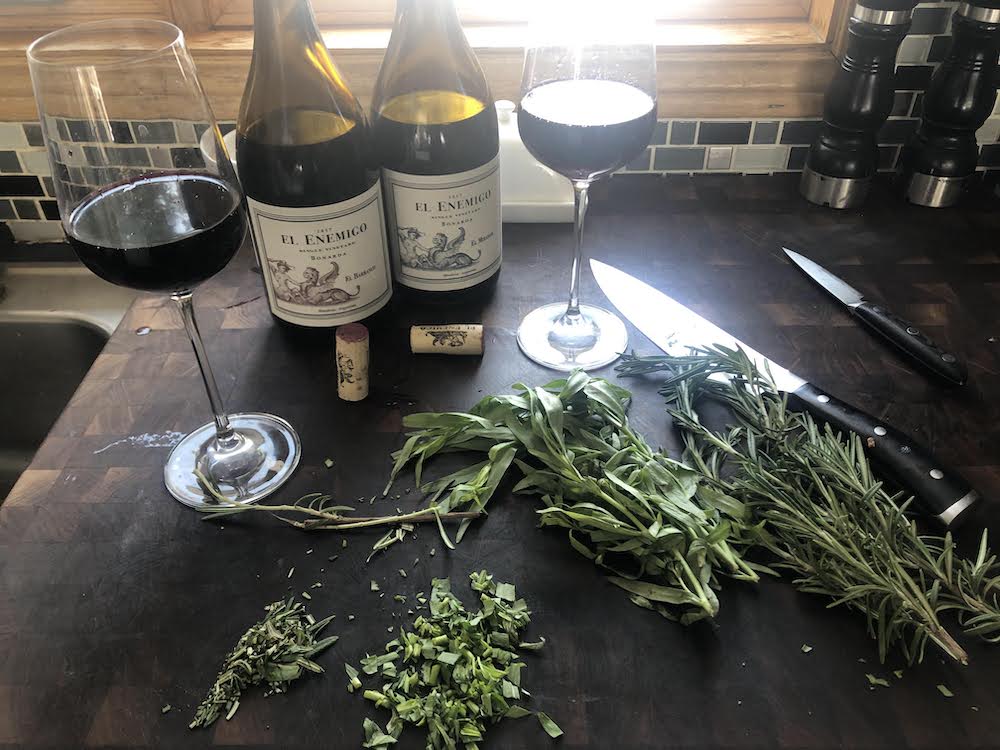
As this recipe takes a while, it’s always good to have a couple of bottles of wine on hand to help you through the afternoon. Upon this occasion it was a couple of single vineyard Bonardas from El Enemigo, Argentina. Simply delicious. Granted, I was speaking in tongues by the time the dish hit the table, but it certainly lubricated the cooking process.

Firstly we do an overnight marination of two segmented rabbits (be sure to save the heads and innards in the freezer for stock for another day). Marinade as follows: two bottles of red wine (the secret here is to use two bottles of wine that are actually quite good, and not just shitty “cooking” wine, so basically wine that you’d be proud to serve at a dinner party, best to stick with heartier styles too), chopped carrots, celery, onions (red/white/shallot), chopped garlic (I go overboard and use around 10 large cloves), salt, pepper, cloves, juniper berries (around 6), bay leaves (around 8), chopped rosemary/thyme/tarragon (fresh if possible, dried in a pinch).
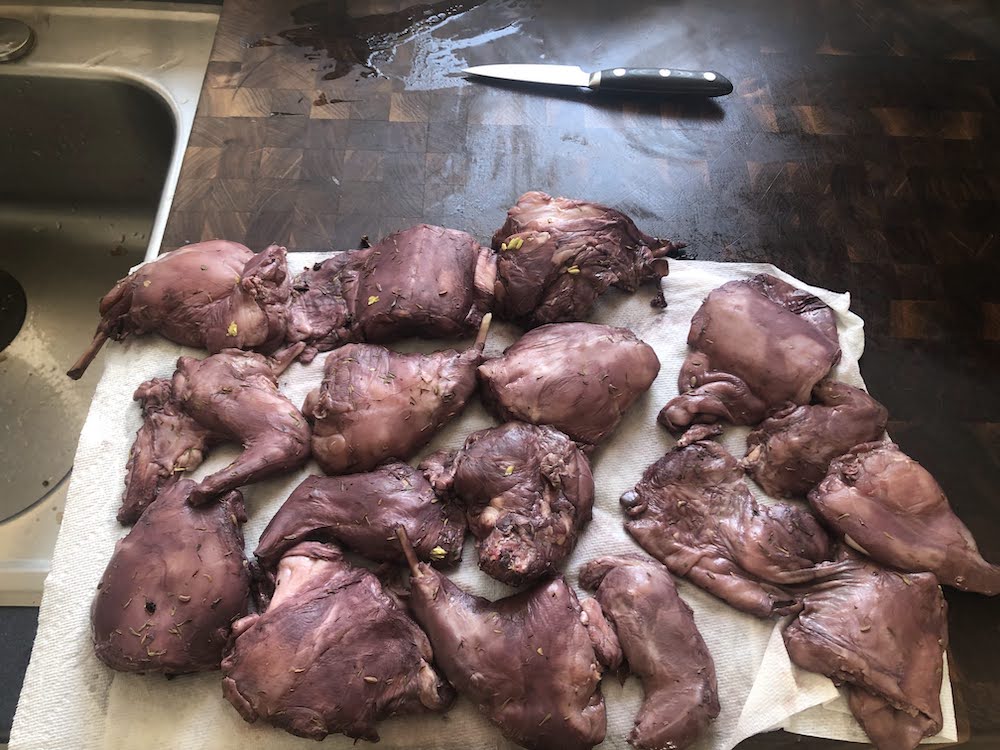
After an overnight sleep in the fridge (covered, if you don’t want everything in your fridge to reek of wine/garlic for a week), remove the wabbit and pat dry. Separate the liquid marinade from the solids and set aside both for now. Upon one occasion I was distracted and threw this out… not a good move.
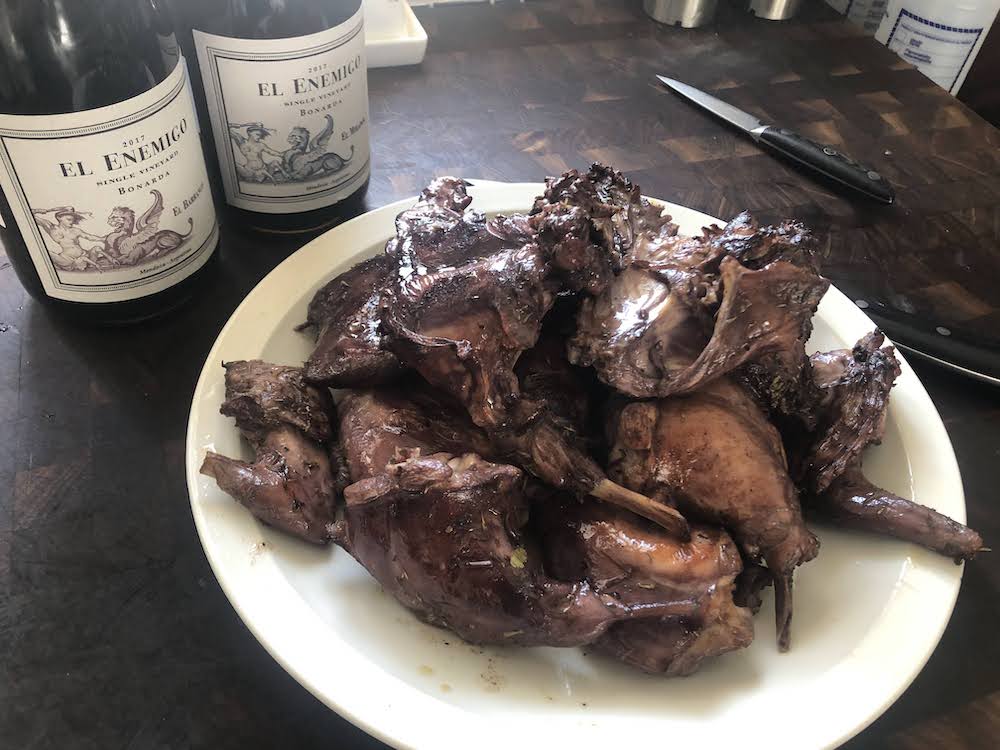
Carefully brown the rabbit segments in a mixture of butter/olive oil in a hot cast iron Dutch oven and set aside. It’s best to do this around three pieces at a time. Grab your marination solids and add them to the medium/high Dutch oven, softening them for about quarter of an hour, stirring now and again, but not too much, as I find the slightly caramelized vegetables to add an extra layer of flavour. Add two tablespoonfuls of “Best For Blending” flour and thoroughly coat all the vegetables. I like to cook the floured veggies for an additional couple of minutes here, as if I’m going to add flour to any dish I like to thoroughly cook it through first, same with white sauces etc. It’s probably worth noting at this point that this recipe can be successfully replicated with wild rabbit or hare, although I’d cut the amount of flour one adds to the vegetables in half if using hare.

Add your browned rabbit segments back into the Dutch over and reintroduce the marinade liquid. I usually choose to add more chopped fresh herbs at this point. Before leaving on a lumbering simmer for around 90 minutes, be sure to follow my mushroom instructions below, if you happen to have any hanging around.
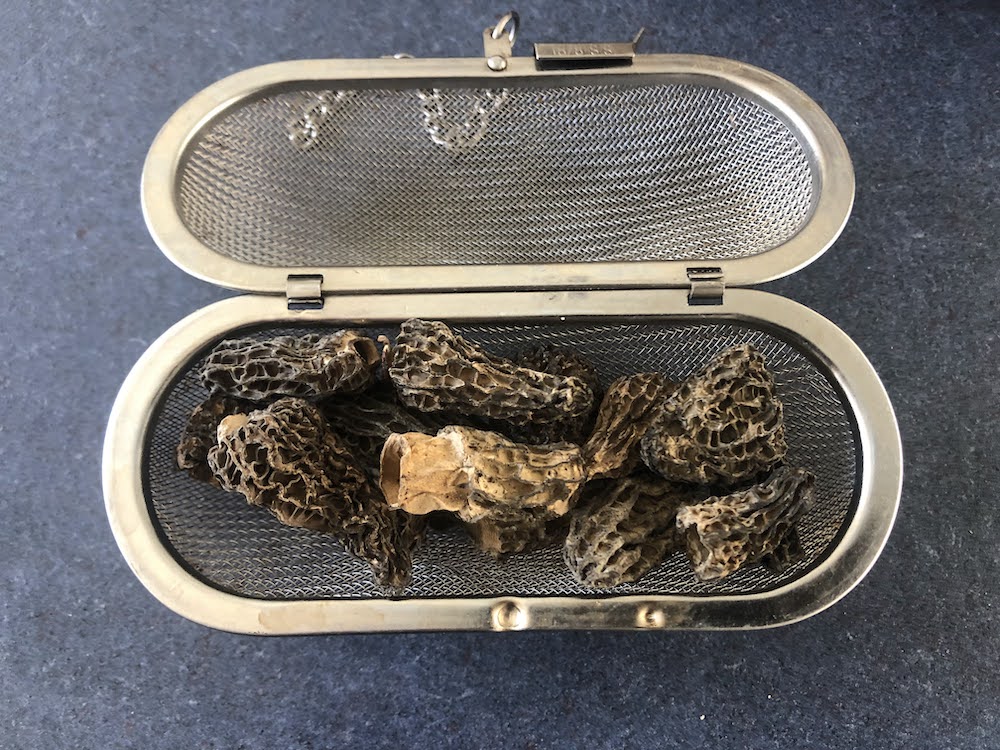
Over the years I’ve established a way to imbue the dish with wild mushroom flavours and yet still retain the mushroom as a textural component in the finished sauce. I tend to use dried morels and place a handful into a bouquet garni infuser, slipping it into the Dutch oven just before the 90 minute cook time. When the timer goes off I remove the infuser, shaking it free of any of the delicious cooking sauce, and slice the morels, leaving them to one side.
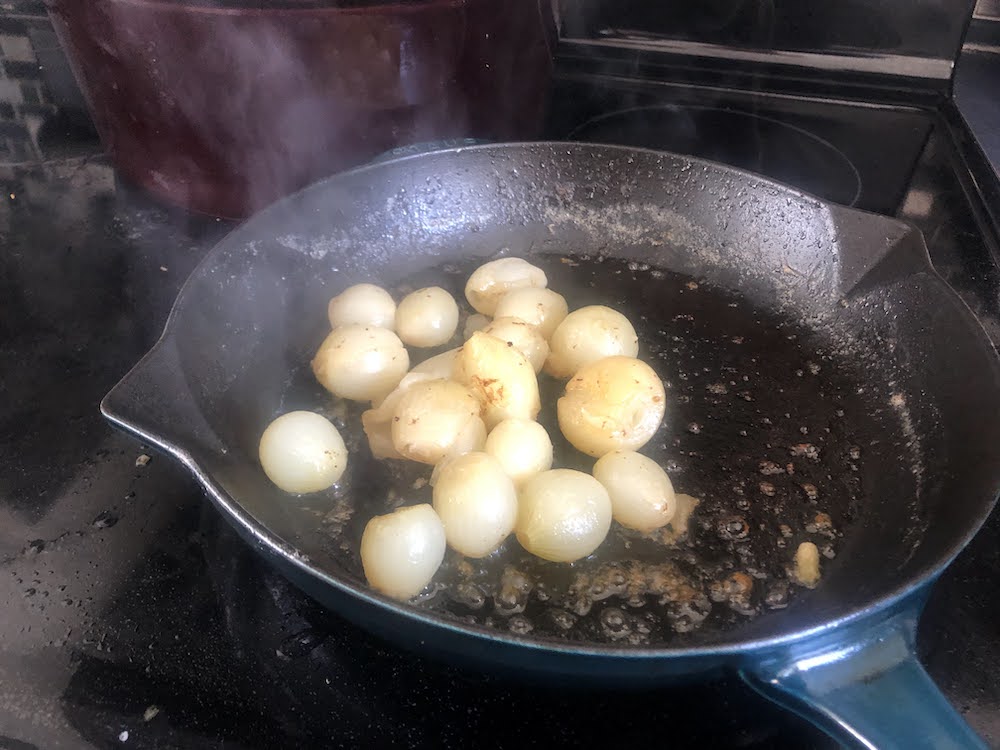
While your rabbit is slowly stewing away, peel around 20 pearl onions, a complete pain in the arse to do properly. Meanwhile, in a small saucepan, render around half the fat out of around 1/3 lb of good quality, thick back bacon cut into lardons. Set the just-crisped (but still pinkish) bacon aside, and using the same bacon fat-laden pan, add your peeled pearl onions, a pinch each of sugar and salt, and enough white wine to cover the onions. After bringing to the boil, reduce to a simmer and cover with parchment paper. Have a little peek every five minutes or so, until the wine has evaporated off, and then cook until the onions are nicely golden in colour (the onions above require quite a bit more goldening). Remove the onions and set aside. Deglaze the messy saucepan with a glass of red wine and reduce to almost nothing, being sure to scrape off any fond that has formed in the pan into the bubbling vinous goo. Season with salt and pepper to taste, and reduce until pretty damn thick. Set this aside.

Remove the cooked rabbit from the cooking liquid, shaking off any sauce, and set aside. Take the cooking liquid and strain AGAIN, at this point I often push the solids agains the sieve to squeeze out as much flavour as possible. This time you can dispose of the solids. Add your reduced red wine and fond, the goldened pearl onions, the just crispy lardons, and your sliced Morels. Mix together and season to taste. At this point I usually add between 1 – 4 tablespoonfuls of butter, depending upon the leanness of your meat and the amount of bacon fat you rendered earlier. So, you are basically mixing in more butter until you achieve your preferred level of richness.
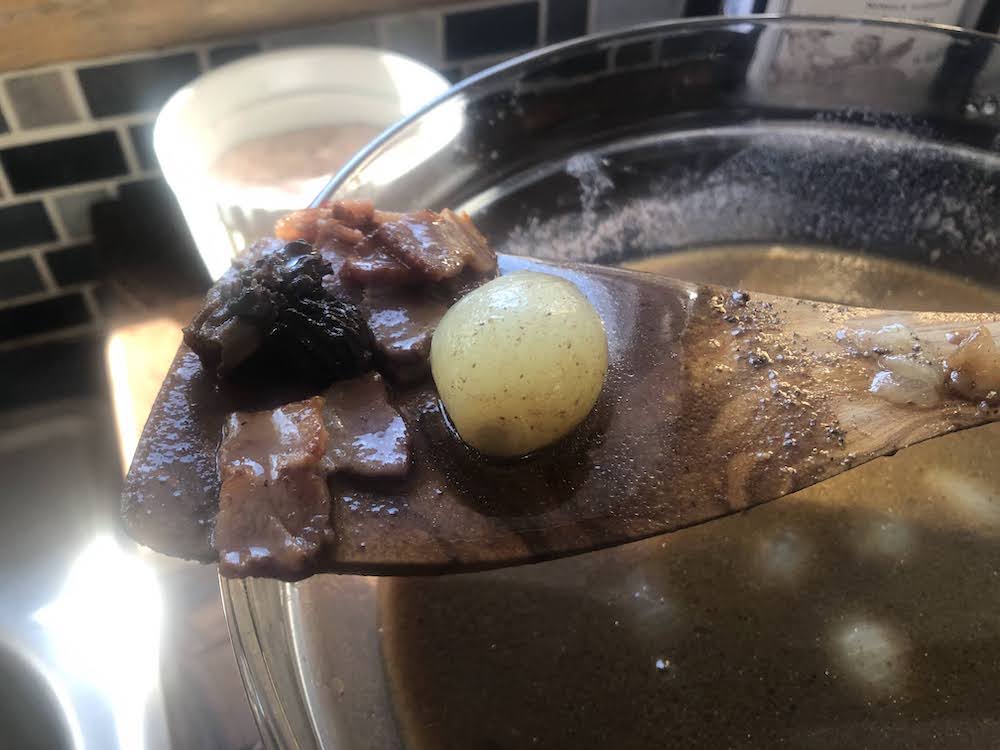
Your sauce should now be wonderfully rich and flavourful containing the three essential elements you see on the spatula. As I have a special Staub rabbit attachment for my Dutch oven (see pic #6), I prefer to serve this directly from the cast iron for dramatic effect at the table. Add your cooked rabbit back to the sauce, warm up on the stovetop if required, and serve. I like mine with boiled new potatoes, sweet summer peas, rapini with garlic/lemon.

Almost there… my personal take on Coq Au Vin… with a couple of rabbits. Also, one last tip: if you are planning to write about this recipe for a website, it’s usually best to remember to take a pic of the final plated dish… personally I blame all that wine. Trust me, it looked fabulous.



